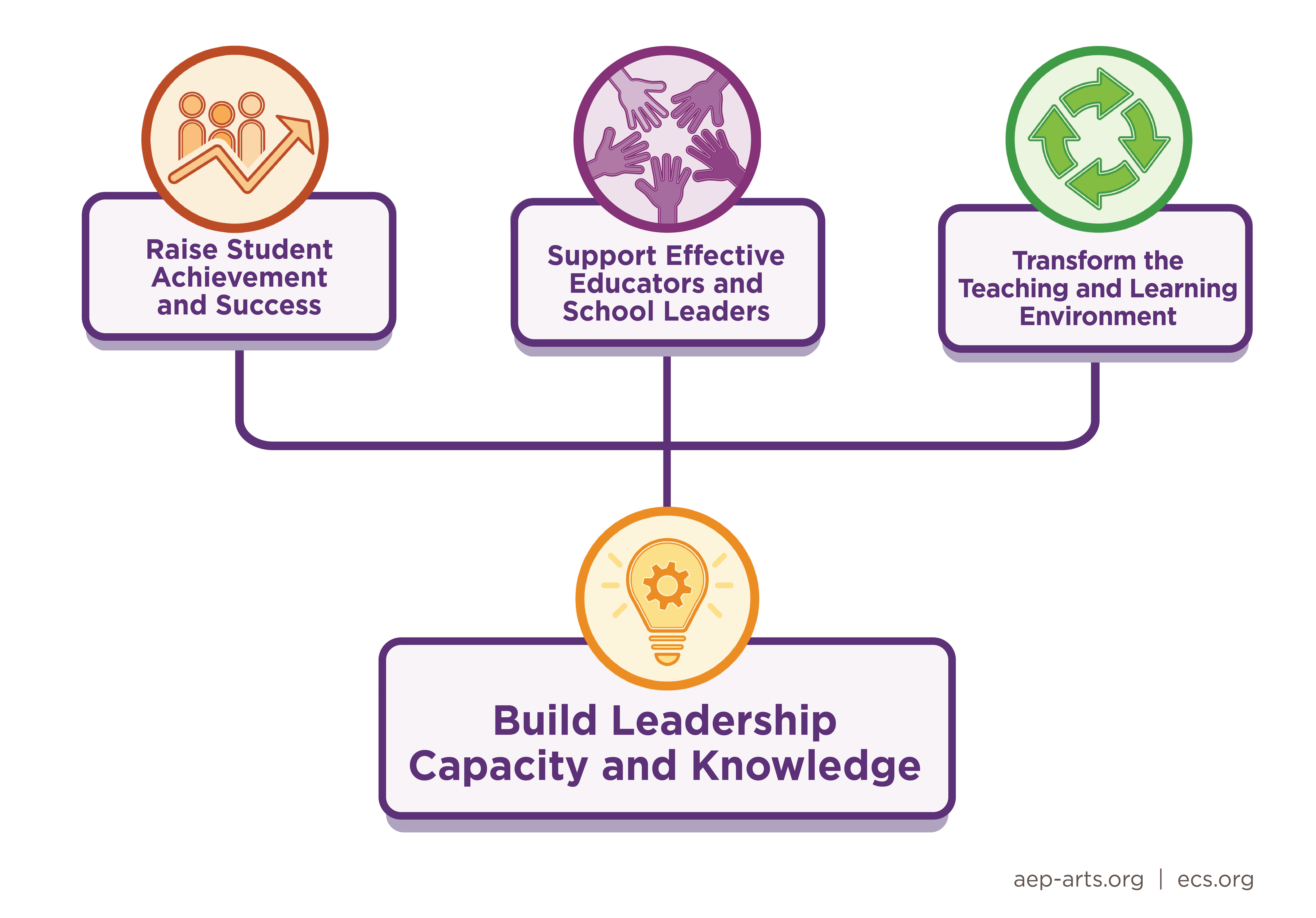A major part of the Arts Education Partnership’s work in the past six months has been focused on its new strategic mission and engagement strategy. These documents articulate how AEP — including its 114 partner organizations — can add value to the work of Education Commission of the States and maximize its position to inform and elevate the work of partners. Current partner organizations collectively work at every level of the education sector from birth through adult learning, in schools and communities and in every art form; and they have deep experiences in all facets of education to share with policymakers.
Strategic Mission
When I started my tenure as AEP director in October 2019, I knew the organization’s guiding 2020 Action Agenda would need to be refreshed. This document had served as the framework under which AEP’s work was organized since its adoption in 2015.
Education Commission of the States and AEP solicited feedback from partner organizations on a refreshed guiding document, and AEP has updated our strategic mission with this feedback in mind. I’d like to highlight a few key parts of that strategic mission.
First, the new strategic mission statement — around which AEP is organizing all its work — is:
AEP is the nation’s hub for arts and education leaders, building their leadership capacity to support students, educators and learning environments. Through research, reports, convenings and counsel, leaders gain knowledge and insights to ensure that all learners receive an excellent arts education.
The 2020 Action Agenda had four pillars related to supporting students, educators, leaders and learning environments. The new strategic mission focuses AEP’s work on building leadership capacity for arts and education leaders. The remaining three pillars represent the ways in which partner organizations do their work.

Second, the strategic mission aligns AEP’s products and services to Education Commission of the States’ research, report, convene and counsel framework. This framework allows AEP to more clearly describe the ways in which its partners and others can engage in the work.
Third, in response to feedback from partner organizations, AEP made a deliberate choice in the strategic mission to use “arts education” to describe all learning facilitated by AEP partners. This includes in-school experiences with certified arts teachers, arts integration experiences with general education teachers and/or teaching artists, and community-based arts learning experiences. AEP has been using the framework outlined in Americans for the Arts’ 2014 publication “A Shared Endeavor: Arts Education for America’s Students" to help describe arts education in these varied contexts.
Engagement Strategy
In addition to the strategic mission, the new engagement strategy outlines expectations for how AEP interacts with partners and how partners interact with AEP. The guiding principle in the development of this document is that information should be bi-directional: Partners should share information and expertise with AEP, and AEP should share information and expertise with partners. There are a few key changes outlined in the engagement strategy that AEP hopes will provide clarity and invite more arts education leaders to engage.
First, criteria for becoming a partner organization focus on organizations that do work at a national level or that focus on systems change. AEP defines “systems change” as working to change institutional structures and behaviors, public attitudes, cultural norms, policy decisions and/or resource allocation in order to support equitable access to arts education for all learners, especially those who have historically been marginalized by systemic racism and inequalities.
Next, there is a new affiliate category for organizations and individuals who aren’t working nationally or at the systems-change level. For example, these could be organizations doing direct service work in their local communities or emerging groups who would benefit from connections to people doing similar work.
Finally, AEP more clearly outlined both the benefits and responsibilities of partnership. There are new benefits for becoming a partner — like accessing the early-bird registration rate for the AEP Annual Convening up to the event start date — and new opportunities for engagement. Engagement activities could be partners contacting AEP staff members to request a speaker or facilitator for an event, co-authoring a conference session proposal or collaborating on a publication.
As a reflection of both the strategic mission and engagement strategy, AEP created a What We Do page on its website so partners, affiliates and others know how they can collaborate with AEP and with each other. AEP hopes the clarity this page brings to its products and services, along with a revitalized strategic mission and engagement strategy, sets the tone for future work.
AEP looks forward to bringing its new guiding documents to life!






